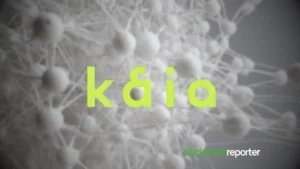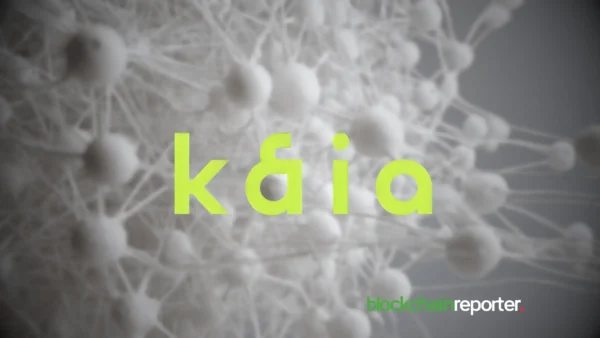
Web3 represents the next stage of the internet, prioritizing principles of decentralization, interoperability, trustlessness, and privacy preservation. However, without robust blockchain multichain compatibility within the Web3 ecosystem, the risk of collapse will always be waiting when innovation hits a bottleneck.
Not just a technical mechanism, multichain compatibility is fundamental for the growth, adoption, and sustained operability of Web3. As the development of decentralized applications (dApps) and blockchain interoperability continues to advance and evolve, an absence of reliable multichain solutions threaten to destabilize the foundations of Web3.
Modern Multichain Challenges
Built on the fundamentals of cryptocurrencies, crypto bridges were created to offer interoperability between blockchains, enabling the movement of assets from one chain to another. Because the connection between blockchains is a vital aspect of Web3, these bridges have enabled users ability to seize the best qualities of multiple blockchains without being confined to one.
However, crypto bridges of today still pose security risks, seen in 2022 when the Wormhole network witnessed the siphoning of millions of dollars after hackers exploited the bridge’s smart contract vulnerabilities. This example highlights the importance of developing multichain compatibility that eradicates the inherent vulnerabilities of modern day crypto bridges.
Additionally, another important aspect to examine here is the scalability of blockchain networks — often limited by either a lack of or inefficient multichain framework. A lack of scalability tech support hampers many existing multichain solutions. This leads to increased security risks and congestion as higher volumes of transactions begin to slow the network.
ZK Proofs: Creating Safer Multichain Solutions
Zero-knowledge (ZK) proofs are a cryptographic technology utilized to enable one party to verify another party’s statement is true — without having to reveal any information beyond the statement’s validity. Though complex in nature and seemingly unrealistic, advancements in computational power and capabilities have made it possible to incorporate this technology into multichain compatibility.
Vital for the privacy and security of confidential details, ZK proofs enable multichain solutions to ensure data integrity is verified and protected in all transactions across different blockchain networks. By bridging crypto transactions in this manner, user transactional data privacy is preserved without sacrificing security.
Furthermore, by integrating ZK proofs into multichain solutions, it has created a technological shield against many security risks exposed in past crypto bridge security failures. By ensuring the underlying data remains private, the exposure to fraud or data leak risks are significantly reduced — building user trust in a trustless manner and strengthening the fundamental application of Web3 principles.
Prom: Multichain Compatibility Through ZK Tech
As ZK technology integration steadily increases, so too has its use cases as projects apply its principles and utility to multichain compatibility. One such example is Prom ZkEVM, a modular ZkEVM Layer 2 (L2) solution that facilitates multichain compatibility across numerous blockchains — including both Ethereum Virtual Machine (EVM) and non-EVM compatible networks.
Using ZK proofs, Prom facilitates efficient and secure transactions across blockchains, ensuring data integrity, fast transactions, and protection from fraud or hacks. Powered by Polygon, Prom utilizes a type of ZK proofs called zkSNARKS. These effectively reduce the costs of transactions while offering users privacy-protections and an economical blockchain solution.
How Prom Optimizes Multichain Compatibility
By using ZK technology to maintain privacy in this way, Prom strengthens the resilience and integrity of the blockchain networks connected through its multichain compatibility — providing users with a reliable and secure modern bridging alternative.
By harnessing the utility of Polygon Zero, Prom is able to empower users to carry out rapid transactions and create scalable dApps through scalable transparent arguments of knowledge (STARKS) — a form of cryptographic proof technology.
Furthermore, Prom’s L2 solution boasts the ability to submit proofs to multiple blockchain networks without compromising security. This has made Prom a prime example of how ZK multichain compatibility in the space should be utilized to protect users from security breaches and optimize multichain interactions.
Securing Web3 Through Multichain Framework
Web3 is an adaptive and constantly developing transition that we are witnessing today, but it requires the unification of a solid multichain framework. As we peer into the future it becomes increasingly apparent that interoperability issues need to be remedied before they arise and halt Web3 growth in its tracks.
By developing a standardized framework for multichain compatibility — such as the multichain framework employed by Prom — transactional interactions between blockchains becomes seamless. As projects continue to emerge, prioritizing the development of this focus on interoperability, the resilience of the Web ecosystem will only continue to increase.
Amplifying Web3 Through Multichain Compatibility
Having considered the exposed risks of modern crypto bridging solutions and their impact on the fundamentals behind Web3, it is clear that multichain compatibility requires significant prioritization. Using the privacy-preserving and security-reinforcing technology behind ZK proofs, projects like Prom are pushing towards a future where the capabilities of Web are both supported and optimized.
The need for innovation and adoption of reliable multichain solutions are crucial if we are to prevent the fragmentation of Web3 and avert the resulting disconnection of the blockchain ecosystem. By unlocking the full capabilities of multichain compatibility, the long-term sustainability of Web3 in the future is ensured.









